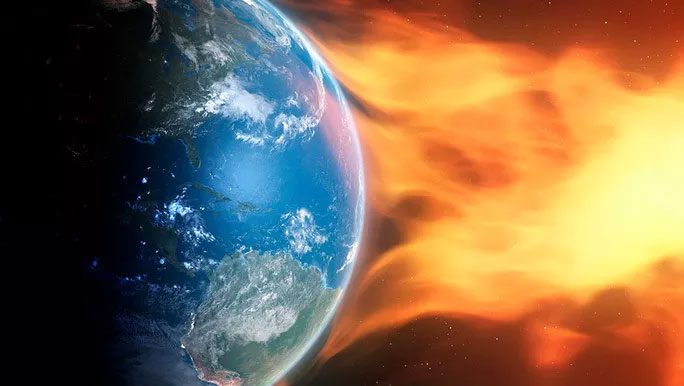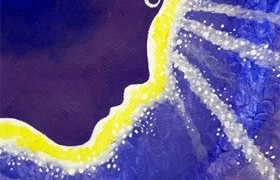Deep beneath the layers of eternal ice in Greenland and Antarctica, researchers have uncovered traces of an ancient disaster, described as one that once “shattered the Earth.”
The most frightening aspect is that this disaster could repeat itself, warns a study recently published in Nature Communications.
The international research indicates that 9,200 years ago, one of the most intense solar storms ever recorded struck the planet, which Live Science describes as “shattering the Earth.”

A super solar storm could severely damage electrical and telecommunications systems – (Illustrative image from BBC)
Analysis of ice cores from Greenland and Antarctica revealed a dramatic increase in radioactive beryllium-10 and chlorine-36 nuclei, clear signs of a solar storm. In terms of intensity, it matches the strongest solar storm previously recorded that occurred during the solar maximum between 775 and 774 BC.
However, according to geologist Raimund Muscheler from Lund University (Sweden), a member of the research team, this 9,200-year-old solar storm occurred during a solar minimum in the sun’s 11-year activity cycle, which left them perplexed. This suggests that at any moment, the Earth could be subjected to a cosmic “blow” from the universe.
The extent of the damage it caused to the ecosystem during that era is still unknown, but if it were to happen again, it could be a disaster capable of devastating modern civilization.
According to Science Alert, a similar superstorm could very well occur in the future. It takes only about 15 hours for it to hit Earth and could destroy the entire electrical grid, internet systems, air traffic control systems, undersea cable systems, etc., regressing human life by centuries. This situation could last for several months.
At that time, the whole world would be illuminated by the aurora borealis, a phenomenon that previously only occurred at the poles, but certainly a deadly beauty.





















































